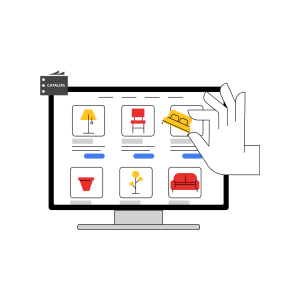Introduction
Healthcare interoperability remains a critical challenge for modern medical institutions struggling with fragmented systems and disconnected data flows. Originally developed in the 1960s, Electronic Data Interchange (EDI) has evolved into a fundamental technology for healthcare organizations, offering significant cost savings while improving operational efficiency. Furthermore, in the healthcare industry, efficient data exchange is essential for managing everything from patient records to insurance claims and regulatory compliance.
We understand that healthcare electronic data interchange simplifies these processes by automating transactions, reducing paperwork, and improving accuracy. By digitizing processes, healthcare data interoperability reduces reliance on manual tasks, shortens response times, and minimizes errors, significantly boosting operational efficiency. Additionally, implementing EDI in healthcare leads to substantial cost savings by reducing administrative expenses associated with paper-based processes and manual data entry.
In this comprehensive guide, we’ll explore how EDI works alongside Global Data Synchronization Network (GDSN) and Product Information Management (PIM) systems to create seamless healthcare interoperability solutions that transform healthcare commerce. Whether you’re new to these technologies or looking to optimize your existing systems, this article will provide valuable insights into healthcare interoperability standards and best practices for implementation.
Key Takeaways
- EDI automation reduces healthcare administrative costs by $193 billion annually while cutting data entry errors by 80% through standardized electronic transactions
- GDSN creates a single source of truth for product data across the entire healthcare supply chain, ensuring all stakeholders have access to identical, real-time information
- PIM centralizes product information management, enabling 4-6x faster onboarding of new medical products while maintaining data quality and consistency
- Integrated systems deliver measurable results: up to 73% reduction in ordering discrepancies and 50% decrease in supply chain costs
- Healthcare interoperability through these technologies eliminates an estimated $36 billion in waste from inpatient settings alone, while ensuring regulatory compliance
Understanding the Core Technologies: EDI, GDSN, and PIM
Efficient data exchange forms the backbone of modern healthcare systems. To fully harness the power of healthcare interoperability, we must understand the three core technologies that drive it. Each plays a distinct yet complementary role in creating a seamless healthcare ecosystem.
What is EDI and How it Works in Healthcare
Electronic Data Interchange (EDI) represents the automated transfer of data in standardized electronic formats between computer systems. In healthcare, EDI enables direct communication between providers, insurers, and suppliers without manual intervention. This technology uses secure transmission protocols such as SFTP (Secure File Transfer Protocol) or AS2 (Applicability Statement 2) to safeguard sensitive medical information during transfer.
EDI operates through standardized formats that define the location and order of information in document exchanges. The most common healthcare EDI standards include:
- X12 for administrative transactions like claims and referrals
- HL7 for clinical data exchange
- NCPDP for pharmacy-related transactions
The process begins when healthcare providers prepare data for transmission, including patient information and treatment codes. This data is structured according to specific EDI standards and sent to a clearinghouse that reformats and validates it before transmitting it to the payer. Studies show that implementing EDI can reduce data entry errors by approximately 80%.
Overview of GDSN and Its Role in Data Synchronization
The Global Data Synchronization Network (GDSN) serves as an internet-based, interconnected network of interoperable data pools governed by GS1 standards. It functions as a centralized repository for product, pricing, and healthcare data across all industry categories, including pharmaceuticals, medical devices, and medical consumables.
GDSN operates through a publish-subscribe model—when suppliers update product information in their data pool, changes automatically reflect across the entire network. This ensures all stakeholders have access to standardized, up-to-date information on medical products.
The primary goal of GDSN is to enhance overall data integrity within the healthcare sector. By enabling accurate, real-time sharing of product data between manufacturers, distributors, and healthcare providers, GDSN improves supply chain visibility and traceability. This capability is particularly crucial in healthcare, where inconsistent product information can make it nearly impossible for hospitals to conduct effective supply chain procurement.
What PIM Does for Product Information Management
Product Information Management (PIM) serves as the process of managing and enriching product information and related digital assets across different teams. Unlike GDSN, which focuses on global synchronization, PIM emphasizes internal management and distribution of product data across multiple platforms.
PIM systems store product-related data in one centralized location and enable users to enrich this information. The collection process involves importing data from various sources, including supplier data feeds, data pools, and Enterprise Resource Planning (ERP) systems. Once collected, PIM effectively manages this data by ensuring it is organized, accurate, and updated.
In healthcare specifically, PIM helps medical device manufacturers maintain a single source of truth to enable all supply chain processes and ensure product traceability and patient safety. This is particularly valuable given the challenges of fragmented product data, high variability for different channels, and manual error-prone processes that plague healthcare organizations.
By centralizing product information, PIM allows companies to distribute data quickly and consistently across teams and channels. This comprehensive approach ensures accurate, consistent, and updated information across all channels, ultimately fostering an engaging and effective product presentation.
How EDI Enhances Healthcare Interoperability
The impact of disconnected healthcare systems extends beyond operational inefficiencies—it directly affects patient care and financial outcomes. Electronic Data Interchange (EDI) serves as a critical bridge for healthcare interoperability, addressing these challenges through standardized data exchange.
Automating patient data and claims processing
EDI technology transforms healthcare administrative workflows by eliminating manual processes that traditionally slow down patient care delivery. The Council for Affordable Quality Healthcare estimates that administrative complexity costs the U.S. healthcare system a staggering $400 billion annually. Through automation, the industry has already saved $193 billion, with potential for an additional $18.3 billion through further automation.
Claims processing represents one of EDI’s most valuable applications. Instead of labor-intensive paper submissions, healthcare providers can electronically transmit insurance claims using standardized formats that expedite the billing cycle. This automation accelerates transaction processing from weeks or months to just days. Moreover, EDI enables real-time eligibility verification, allowing providers to instantly confirm patient coverage details, deductible status, and copays.
The financial impact is substantial—EDI claim submission alone offers potential cost savings of $2 billion annually. Healthcare organizations implementing EDI can reduce administrative overhead by 30-50% through automation.
Reducing manual errors and improving accuracy
One of healthcare’s persistent challenges has been the prevalence of data entry errors that compromise patient care and increase costs. Consequently, EDI implementation dramatically reduces these errors through:
- Automated validation that enforces strict formatting rules and ensures required fields are complete
- Error detection systems that flag issues immediately before claims reach payers
- Direct system-to-system transfers that eliminate human transcription errors
- Standardized formats that reduce ambiguity in data exchange
The results are impressive—EDI technology can reduce data entry errors by approximately 80%. This accuracy improvement is vital for maintaining reliable patient records and ensuring correct insurance claims processing.
In practice, accurately filed claims result in fewer denials and less rework, improving operational efficiency throughout the healthcare system. Indeed, EDI’s structured data transmission ensures consistency and integrity across all exchanges between healthcare entities.
Ensuring HIPAA and GDPR compliance
In an industry handling sensitive patient information, regulatory compliance isn’t optional. EDI systems incorporate robust security features that help healthcare organizations meet stringent privacy requirements under both HIPAA and GDPR.
EDI ensures compliance through:
- Advanced encryption and authentication protocols
- Secure access controls that limit data exposure to authorized personnel
- Detailed transaction logs for auditing and regulatory reporting
- Consistent data formatting that meets legal requirements
These security measures protect confidential patient data throughout the communication flow. In fact, EDI technology actually reduces security risks—the fewer healthcare personnel updating patient data manually, the lower the risk of security breaches.
Ultimately, EDI creates a foundation for healthcare interoperability that improves patient outcomes, streamlines service delivery, and enhances financial performance across health systems. By supporting seamless health data sharing, EDI solutions efficiently handle labor-intensive tasks that would otherwise create backlogs in system inboxes.
The Role of GDSN in Healthcare Commerce Efficiency
Standardized product information serves as the lifeblood of efficient healthcare commerce, making the Global Data Synchronization Network (GDSN) a cornerstone technology for modern healthcare systems. GDSN functions as a centralized repository for product, pricing, and healthcare data across all industry categories, from pharmaceuticals to medical devices and consumables.
Standardizing product data across systems
The healthcare supply chain struggles with inconsistent product information, which directly impacts both operational efficiency and patient safety. GDSN addresses this challenge by providing a clear structure for how data is shared, giving suppliers and purchasers access to identical information. This standardization ensures that healthcare providers have accurate details about medical products, substantially reducing the risk of errors in patient care.
Notably, GDSN operates as the foundation for an interoperable electronic supply chain system designed to deliver quality and efficiency benefits to both providers and consumers. By establishing a nationally standardized method of electronic procurement, GDSN removes inefficient, error-prone paper-based processes.
The impact is substantial—healthcare organizations can streamline supply chain processes, ensuring timely delivery of medical supplies and equipment while maintaining optimal inventory levels. This standardization also helps meet increasingly stringent regulatory requirements around product information.
Improving supply chain visibility and traceability
Beyond standardization, GDSN enhances overall visibility throughout the healthcare supply chain. This comprehensive view allows organizations to monitor every process and touchpoint, from planning through manufacturing to final delivery.
Full visibility enables healthcare providers to:
- Pinpoint bottlenecks in production and distribution
- Forecast and prepare for potential delays
- Adjust to increased demands quickly
- Reduce operating costs through improved efficiency
Essentially, GDSN improves traceability, which becomes vital with time-sensitive items like vaccines that require cold storage and have expiration constraints. This traceability feature is particularly crucial for healthcare products subject to strict regulations and standards.
Supporting real-time updates for medical products
Among GDSN’s most valuable capabilities is its ability to enable real-time data synchronization. Suppliers can share product information instantly and consistently with hospitals and clinics through the network. Subsequently, whenever manufacturers update product information in their catalog, these changes are automatically distributed to their community of subscribers.
The real-time nature of these updates offers significant advantages:
- Publishers (suppliers) can update product data instantaneously
- Accurate information is immediately shared across the GDSN network
- Subscribers (healthcare providers) can automatically update their product masters
- Logistics and inventory planning improve with accurate product attribute data
GDSN also supports future expansion, as more information—including sustainability details, product features, and recycling instructions—can be shared through the network. Meanwhile, further automation and artificial intelligence applications are being explored to extract product information directly from documents, minimizing the need for manual entry.
In essence, GDSN provides the framework necessary for healthcare interoperability solutions that improve patient outcomes while simultaneously driving commerce efficiency throughout the healthcare ecosystem.
PIM’s Contribution to Seamless Healthcare Data Management
Product Information Management (PIM) stands as the third pillar in creating truly effective healthcare interoperability systems. Beyond simple data storage, PIM represents a strategic approach to managing the complex product ecosystem that healthcare organizations depend on daily.
Centralizing product information for multiple channels
In the complex healthcare environment, product information typically exists in multiple disconnected systems, creating redundancy and inconsistency. PIM solves this challenge by creating a single source of truth for all product data. This central repository enables healthcare organizations to manage product information across numerous channels—from online catalogs to inventory management systems.
PIM systems particularly excel at handling the immense volume of attributes associated with medical products. For instance, a single medical device might have dozens of specifications, regulatory information, and usage instructions that must be accurately maintained. By centralizing this data, healthcare providers can ensure that every department accesses identical information, thereby reducing errors that could affect patient care.
Enabling faster onboarding of new medical products
The traditional process of adding new products to healthcare systems often involves time-consuming manual data entry across multiple platforms. PIM dramatically accelerates this process through automated workflows and data validation. As a result, new medical products can be added to inventory systems up to 4-6 times faster than with manual processes.
This efficiency becomes especially valuable when:
- New emergency medical supplies must be quickly integrated
- Seasonal products need rapid deployment
- Regulatory changes require swift updates to product information
Improving data quality and consistency
Perhaps the most significant contribution of PIM to healthcare interoperability comes through its enhancement of data quality. Through built-in validation rules, PIM systems automatically check for completeness, accuracy, and formatting of product data. This systematic approach reduces the estimated 30% error rate found in manually managed product information.
PIM’s role in maintaining data consistency extends throughout the healthcare supply chain. From manufacturers to distributors to healthcare providers, all stakeholders can access standardized information that follows uniform formatting and taxonomies. This standardization forms the foundation for effective healthcare commerce by ensuring that everyone operates from the same reliable dataset.
In essence, PIM complements EDI and GDSN by providing the robust data management foundation upon which these technologies depend for optimal performance in healthcare settings.
Integrating EDI, GDSN, and PIM for Unified Healthcare Interoperability
Building a truly connected healthcare system requires more than just implementing separate technologies—it demands their seamless integration. The convergence of EDI, GDSN, and PIM creates a robust framework that enhances supply chain visibility and operational efficiency, transforming fragmented operations into a cohesive ecosystem.
How integration supports end-to-end data flow
The integration of these three technologies establishes a structured data flow throughout the healthcare supply chain:
First, PIM systems collect and centralize product data from various sources, creating a single source of truth. Next, this standardized information is published to GDSN data pools and registered in the GS1 Global Registry. Trading partners then subscribe to relevant product information through GDSN, enabling automatic updates. Finally, EDI facilitates automated business document exchanges based on the synchronized product information.
Real-time synchronization generates substantial operational advantages. When product information updates in the PIM system, it automatically propagates to GDSN and becomes available through EDI platforms to all trading partners.
Benefits of a unified digital ecosystem
A unified digital ecosystem delivers measurable business growth through enhanced visibility and data-driven decision making. The West Health Institute estimated that widespread medical device interoperability could eliminate at least $36 billion of waste in inpatient settings alone.
Organizations implementing this integration report tangible benefits:
- Reduced ordering discrepancies by up to 73%
- Improved payment times and timely information for purchasing
- Enhanced supply chain costs reduction by up to 50%
Conclusion
Healthcare interoperability stands at the crossroads of efficiency, safety, and financial stability for modern medical institutions. Throughout this guide, we’ve explored how EDI, GDSN, and PIM function both independently and together to create a seamless healthcare ecosystem. These technologies essentially transform fragmented, error-prone processes into streamlined, accurate operations that benefit everyone from suppliers to healthcare providers and patients.
EDI dramatically reduces administrative costs while minimizing human error through automated data exchange. GDSN consequently ensures all stakeholders work with identical, up-to-date product information, significantly improving supply chain reliability. PIM undoubtedly serves as the foundation for data quality, centralizing product information and enabling swift updates across multiple channels.
The true power, however, emerges when these technologies work together. Healthcare organizations that implement this unified approach can expect reduced ordering discrepancies, faster product onboarding, and substantial cost savings. Specifically, integrated systems can cut supply chain costs by up to 50% while improving overall operational efficiency.
Commport Commcare Solutions
Need Help? Download: Commport's EDI Buyers Guide
Unlock the full potential of your supply chain with our comprehensive EDI Buyer's Guide — your first step towards seamless, efficient, and error-free transactions
Frequently Asked Questions
EDI in healthcare automates data exchange, reducing administrative costs and minimizing errors. It speeds up transaction processing, improves data accuracy, and ensures HIPAA compliance through secure, encrypted transmission of patient information.
GDSN creates a centralized repository for standardized product data across the healthcare industry. This improves supply chain visibility, enables real-time updates, and ensures all stakeholders have access to identical, up-to-date information on medical products.
PIM centralizes product information management, allowing healthcare organizations to manage data across multiple channels. It enables faster onboarding of new medical products, improves data quality and consistency, and serves as a single source of truth for product information.
The integration of EDI, GDSN, and PIM creates a unified digital ecosystem that supports end-to-end data flow. This integration reduces ordering discrepancies, improves payment times, and can lead to significant cost savings in the healthcare supply chain.
Implementing EDI, GDSN, and PIM can lead to substantial cost savings. EDI alone has saved the healthcare industry $193 billion through automation. Integrated systems can reduce supply chain costs by up to 50%, while widespread medical device interoperability could eliminate at least $36 billion of waste in inpatient settings.





